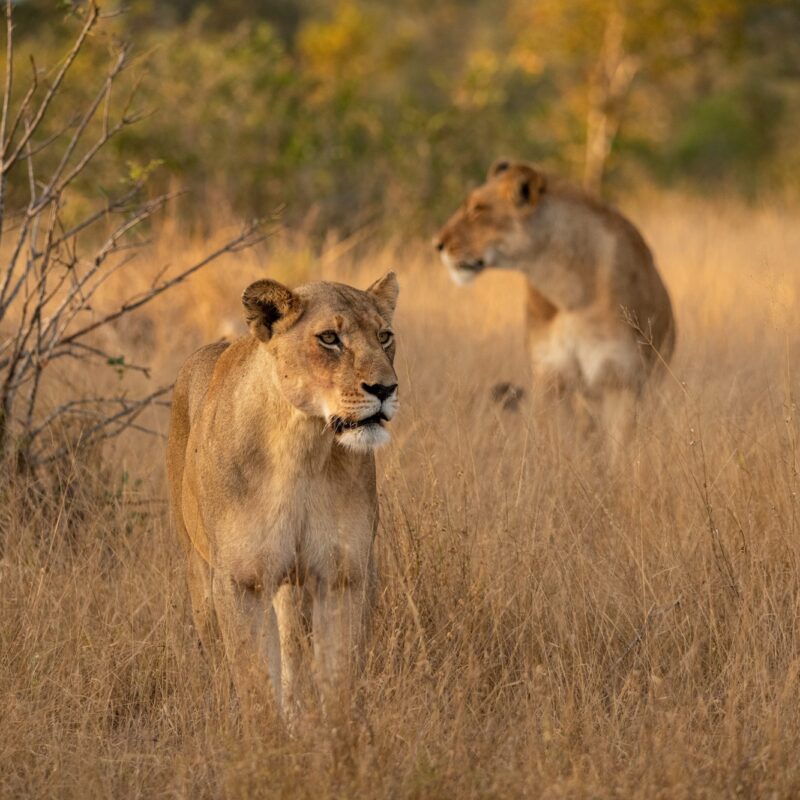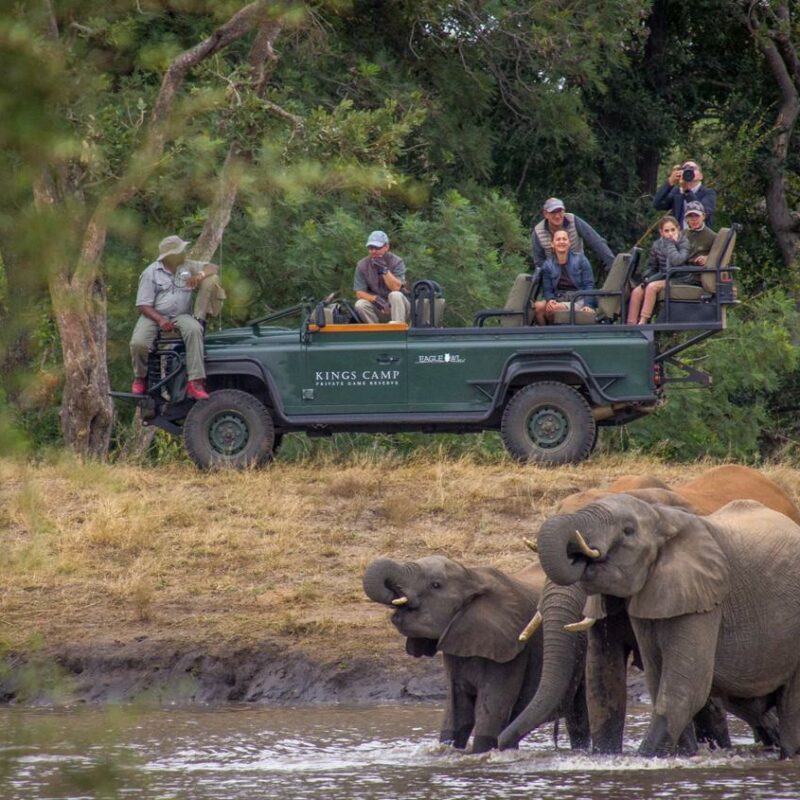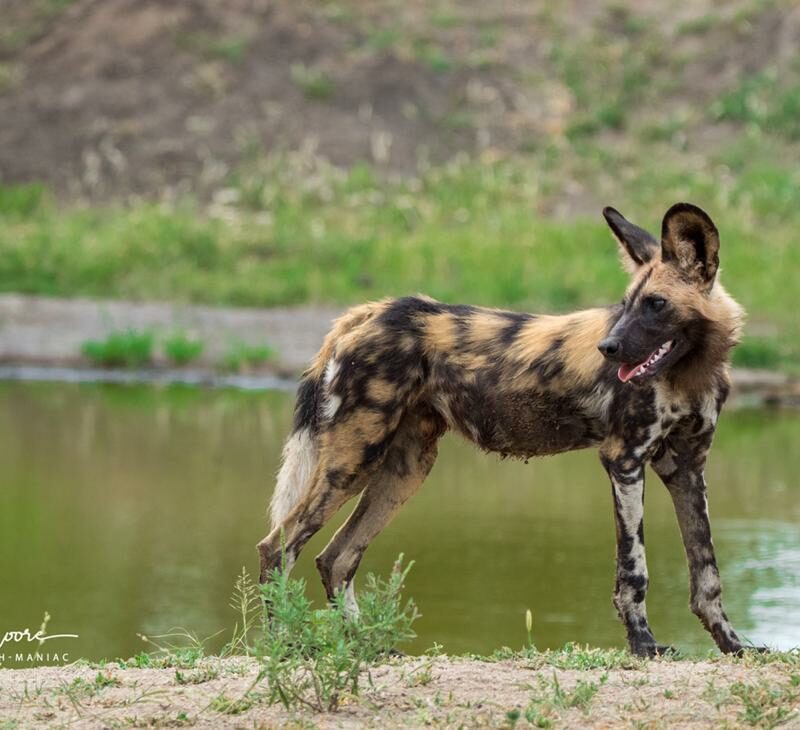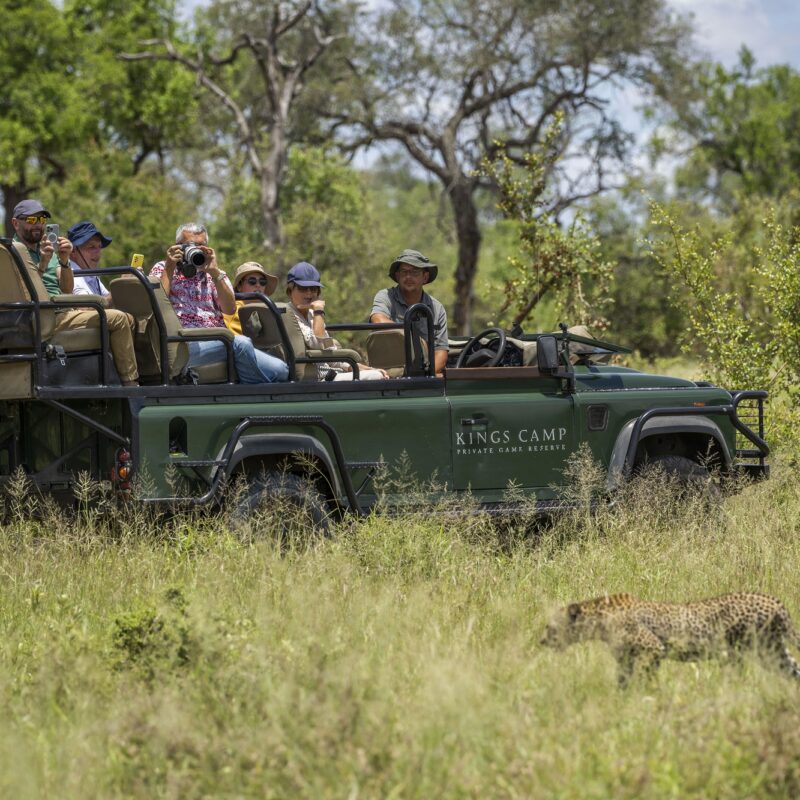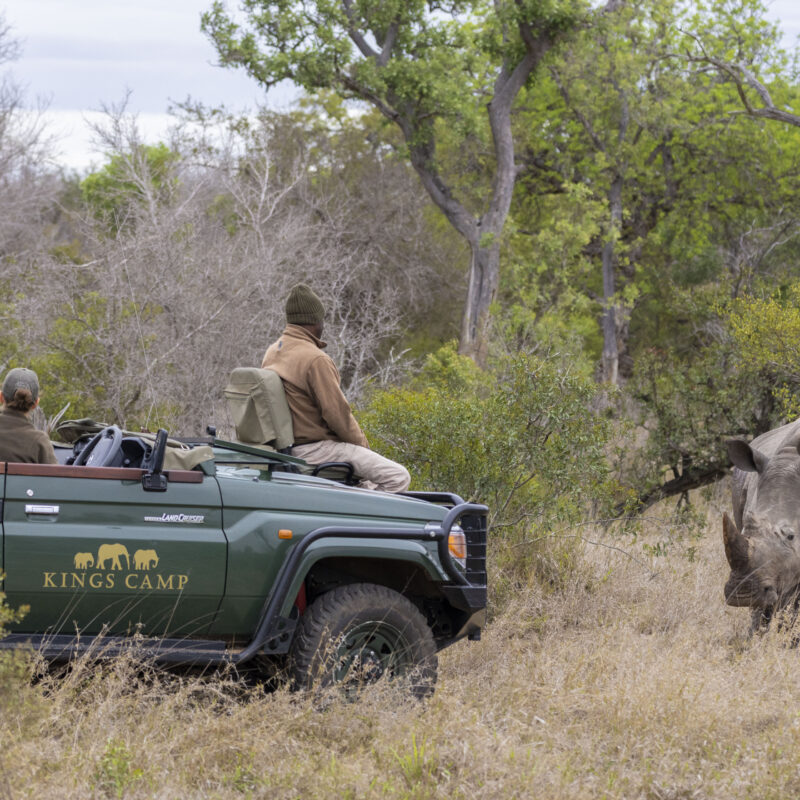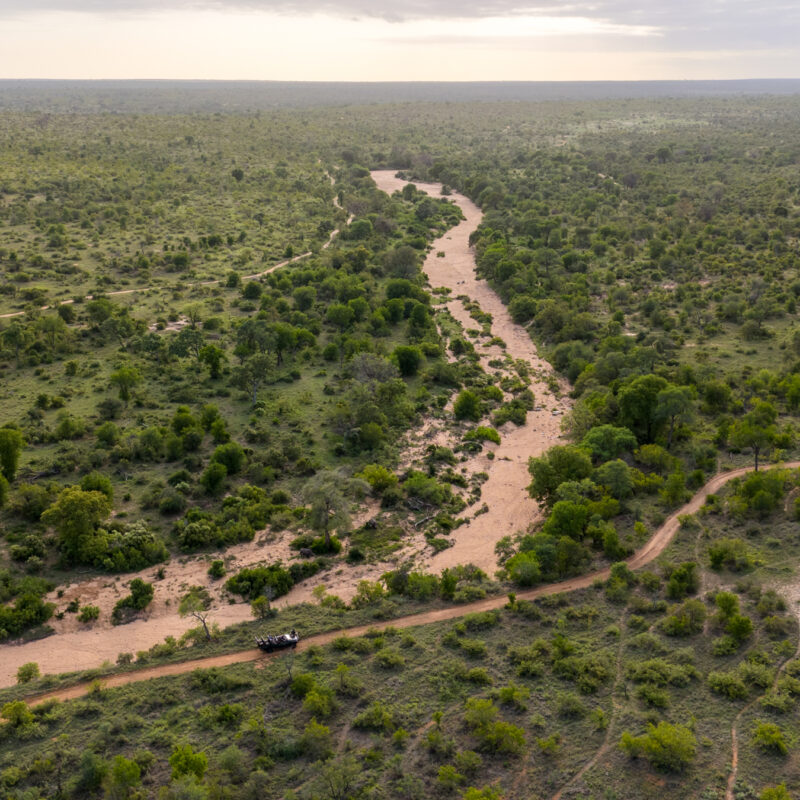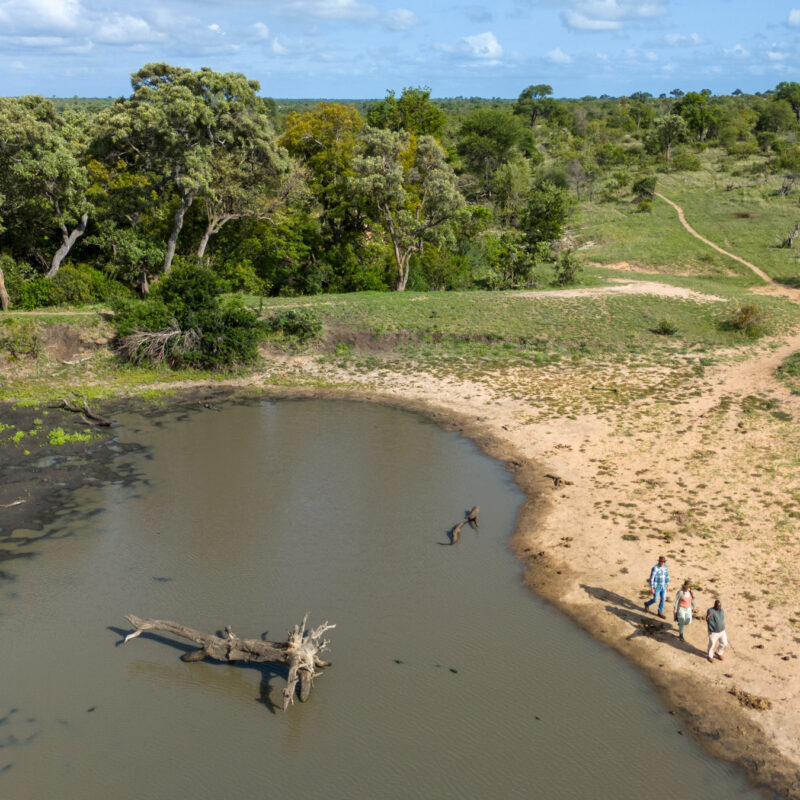The 60,000 hectare Timbavati Private Nature Reserve forms part of the Greater Kruger Conservation Area, located in Limpopo Province in South Africa. The reserve lies west of the Kruger National Park boundary and north-east of Johannesburg. There are no fences between the Timbavati and Kruger, meaning game moves freely between the two reserves. Timbavati Game Reserve came into existence in 1956 by a group of conservation-minded landowners who came together to protect pristine wilderness area from destructive crop and cattle farming. The Kruger National Park itself is a further two million hectares in size, which is about the same size as Israel or Wales.
Kings Camp is situated in the northern corner of the Timbavati Private Nature Reserve and has been in operation as a game lodge since 1995. Kings Camp is committed to sharing an experience of the Timbavati that is both enlightening and relaxing. But above all, Kings Camp pays careful attention to our surrounding environment, and strives for the camp to benefit our nearby community culturally, environmentally and economically.
The Timbavati Private Nature Reserve is situated within the Savanna Biome of South Africa. The biome covers roughly a third of South Africa. Savanna is classified as a vegetation consisting of a tree and grass layer. The terrain in the Timbavati is undulating, with altitudes ranging between 300 to 500 metres above sea level. Granite and Gneiss are the dominant geological formations and thus sandy soils characterise the landscape for most of the region around Kings Camp.
The Greater Kruger National Park has been zoned into 35 basic landscape types. There are 3 different landscape types that are recognized at Kings Camp.
Landscape Types
Kings Camp Private Game Reserve
Olifants River Rugged Veld
Undulating terrain with shallow, stony soils, ranging in altitude from 250 to 300 meters above sea level. Characterized by a sparse grass layer and a prevalence of woody plants.
Bushwillow / Mopane Woodland
This landscape is the most dominant landscape type within the Kings Camp region. The substratum is mainly granite and gneiss intersected by numerous intrusions of dolerite. The altitude varies between 300 and 500 metres above sea level with an annual rainfall of 450-550 mm. The climate is temperate with hot summers and cool winters.
Thornveld on Gabbro
Characterized by thorn savannah and dense grass cover that is typically flat to slightly undulating. The landscape generally has a higher altitude than the surrounding granite areas of 550 and 600 metres above sea level.
The Timbavati Private Natures Reserve experiences two main seasons – summer and winter – with very short periods which could be classified as spring and autumn. It has a typical subtropical climate with warm, wet summers and cool, dry winters.
Summer falls between October and March and this is also the rainy season. Temperatures are moderately high to very high with some humidity and occasional cloudy conditions. The rains, which vary between 450 – 550mm per year, start in November and usually last until the end of March. The dry bush comes alive after the rains, offering spectacular vegetation and the start of a new life cycle. Summers can get hot with average temperatures of 38°C in the months of January to April.
Winter falls between April and September and is the official dry season. The Timbavati winter is cool to warm, and the skies are clear with plenty of sunshine. We are privileged in South Africa to have some of the highest hours of sunshine in the world. Winter is considered the best safari season as the animals can be viewed more clearly in the dry bush and often stay close to water resources. During the winter months, the daytime temperatures in the Timbavati are pleasantly mild but these can drop significantly during the late evenings and early mornings.




